9 Best Herbal Tinctures For Brain Fog
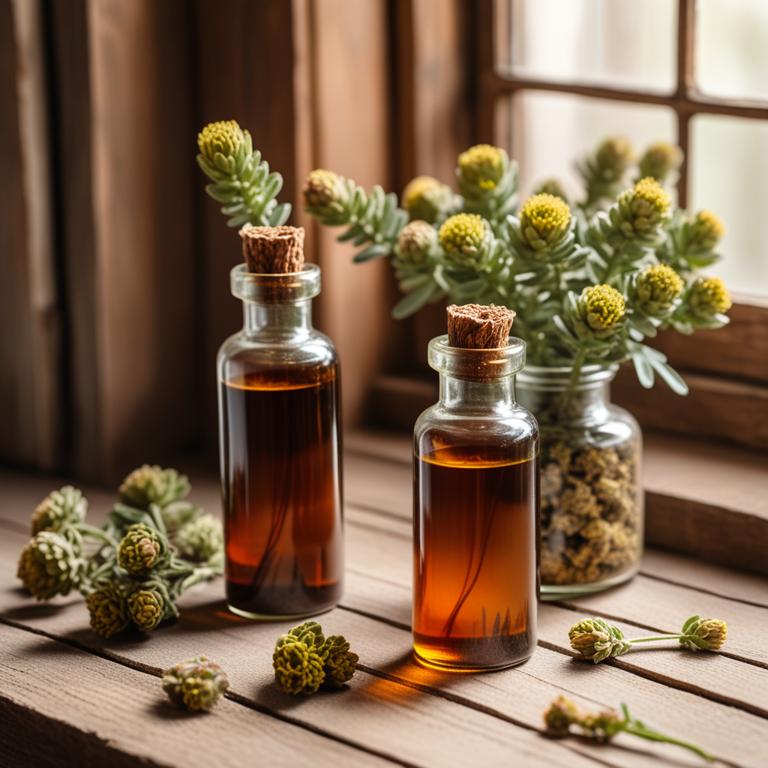
Herbal tinctures for brain fog are liquid extracts made from plants, herbs, and botanicals used to improve mental clarity, focus, and memory.
The benefits of using herbal tinctures to treat brain fog include enhanced cognitive function, reduced fatigue, and improved mood.
Popular herbal tinctures used to treat brain fog include Ginkgo Biloba, which improves blood flow to the brain, Bacopa Monnieri, which enhances memory and concentration, Ashwagandha, which reduces stress and anxiety, Rhodiola Rosea, which improves mental performance and mood, and Lion's Mane Mushroom, which stimulates nerve growth and regeneration.
By incorporating these herbal tinctures into one's daily routine, individuals can experience improved mental clarity and a reduction in brain fog symptoms.
According to "Likars'ka sprava", tinctures for brain fog may be beneficial in improving cognitive and mnestic features, as well as bioelectric brain activity, when made with ginkgo extract, possibly in combination with other compounds.
Below there's a list of the 9 best herbal tinctures for brain fog.
- 1. Ginkgo biloba tinctures
- 2. Bacopa monnieri tinctures
- 3. Panax ginseng tinctures
- 4. Acacia concinna tinctures
- 5. Panax quinquefolius tinctures
- 6. Rosmarinus officinalis tinctures
- 7. Salvia miltiorrhiza tinctures
- 8. Avena sativa tinctures
- 9. Ocimum sanctum tinctures
Also you may be interested in...
TODAY'S FREE BOUNDLE
Herb Drying Checklist + Herbal Tea Shopping List + Medicinal Herbs Flashcards
Enter you best email address below to receive this bundle (3 product valued $19.95) for FREE + exclusive access to The Aphotecary Letter.
$19.95 -> $0.00
1. Ginkgo biloba tinctures

Ginkgo biloba tinctures have been widely used to treat brain fog, a condition characterized by impaired cognitive function and memory loss.
The properties of Ginkgo biloba tinctures, including their antioxidant and anti-inflammatory properties, help to improve blood flow to the brain, which in turn enhances cognitive function and reduces brain fog.
The bioactive constituents of Ginkgo biloba tinctures, such as flavonoids and terpenoids, have been shown to increase the production of neurotransmitters and improve the integrity of the blood-brain barrier, further contributing to their efficacy in treating brain fog.
The benefits of Ginkgo biloba tinctures in treating brain fog include improved memory and concentration, enhanced mood, and increased overall cognitive function, making them a popular natural remedy for this condition.
Related Study
According to "Presse medicale (Paris, France : 1983)", Ginkgo biloba tinctures for brain fog may be beneficial in improving short-term memory, particularly when taken in doses of 600 mg, as it has been shown to significantly improve performance in the Sternberg memory scanning test compared to a placebo.
2. Bacopa monnieri tinctures
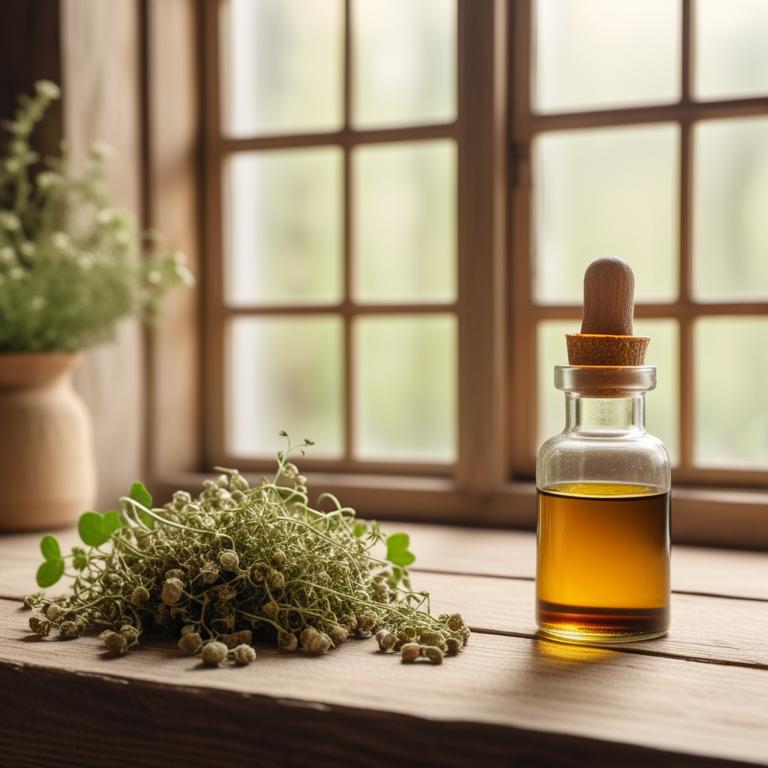
Bacopa monnieri tinctures have been traditionally used to treat brain fog, a condition characterized by mental fogginess and difficulty concentrating.
The properties of this herbal preparation help to improve memory, enhance cognitive function, and promote mental clarity by increasing the production of neurotrophic factors such as brain-derived neurotrophic factor (BDNF) and improving the functioning of neurotransmitters like acetylcholine.
The bioactive constituents of Bacopa monnieri, including bacosides, saponins, and alkaloids, are responsible for its nootropic effects and ability to improve memory and cognitive function.
Regular use of Bacopa monnieri tinctures has been found to offer numerous benefits in treating brain fog, including improved memory recall, enhanced focus and concentration, and increased mental energy and alertness.
Related Study
According to "Complementary therapies in medicine", Bacopa monnieri tinctures for brain fog have shown significant improvements in language behavior cognitive domain and in a number of the memory sub-domains, as well as in hyperactivity and attention-deficit domains, with small to medium effect sizes.
3. Panax ginseng tinctures
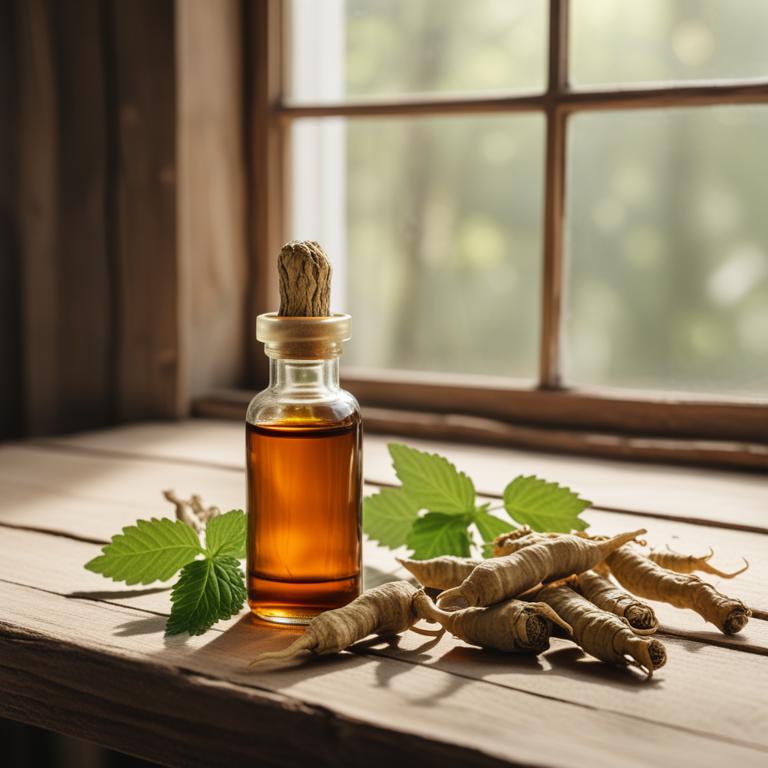
Panax ginseng tinctures have been traditionally used to treat brain fog, a common ailment characterized by mental confusion, fatigue, and lack of focus.
The adaptogenic properties of Panax ginseng tinctures help to enhance cognitive function by reducing stress and promoting relaxation, thereby alleviating brain fog symptoms.
The bioactive constituents of Panax ginseng, including ginsenosides and saponins, play a crucial role in improving blood flow to the brain, enhancing neuroprotection, and modulating neurotransmitters to improve mental clarity.
The benefits of using Panax ginseng tinctures to treat brain fog include improved cognitive function, reduced fatigue, and enhanced overall mental well-being, making it a popular natural remedy for individuals seeking alternative treatment options.
Related Study
According to "Molecules (Basel, Switzerland)", Panax ginseng tinctures may be beneficial in preventing or treating brain fog due to their neuroprotective effects and the potential of their main active ingredient, ginsenoside, in preventing neurodegenerative diseases.
4. Acacia concinna tinctures
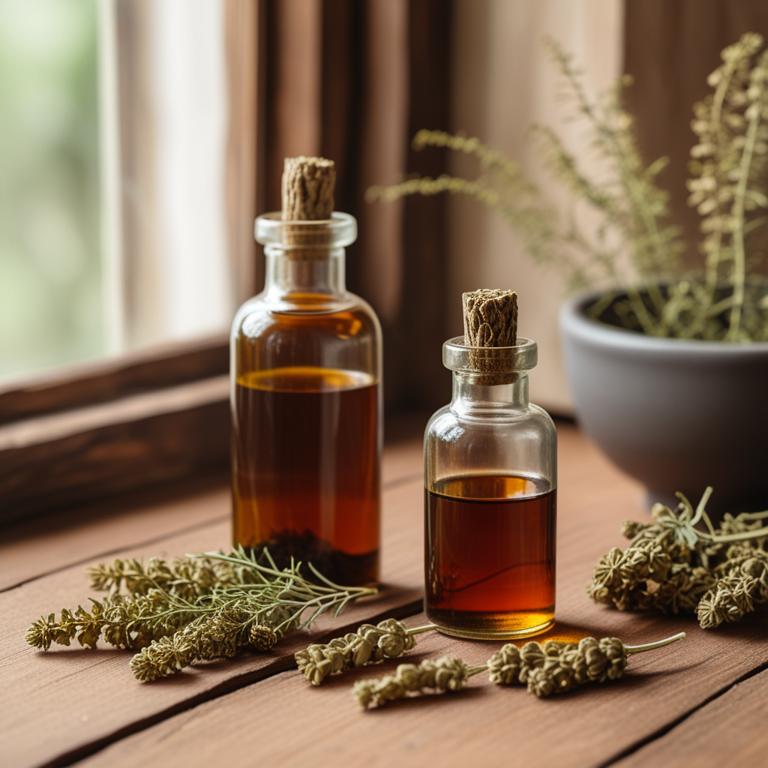
Acacia concinna tinctures have been traditionally used to treat brain fog, a condition characterized by mental fogginess and lack of focus.
The properties of this herbal preparation, such as its adaptogenic and nervine qualities, help to alleviate stress and anxiety, which are often underlying causes of brain fog.
The bioactive constituents present in Acacia concinna tinctures, including flavonoids, phenolic acids, and saponins, may contribute to its therapeutic effects by promoting relaxation, improving mood, and enhancing cognitive function.
By using Acacia concinna tinctures, individuals may experience benefits such as improved mental clarity, enhanced focus, and reduced symptoms of anxiety and depression.
5. Panax quinquefolius tinctures
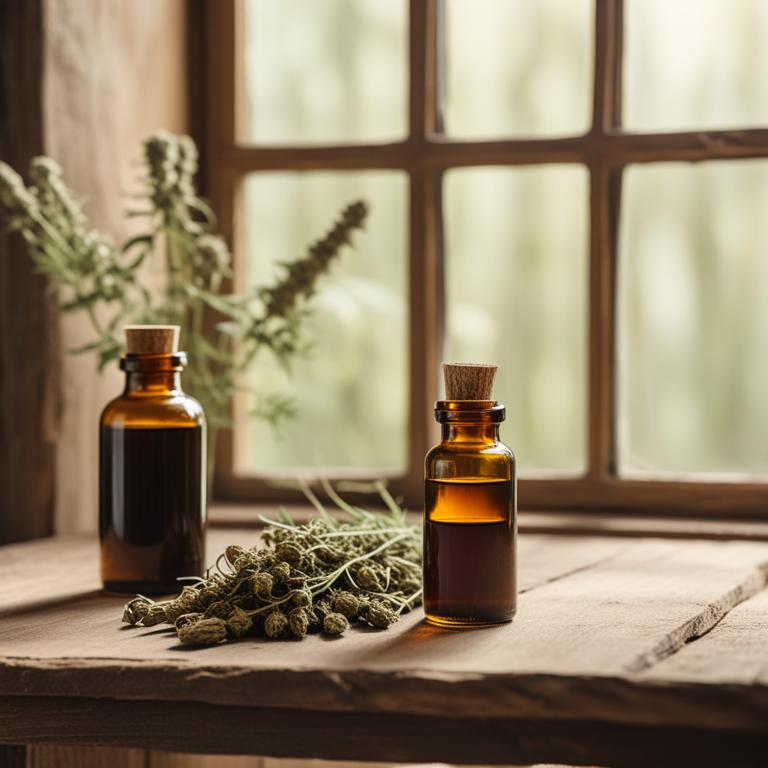
Panax quinquefolius tinctures have been used to treat brain fog due to their adaptogenic properties, which help the body adapt to stress and promote balance in the nervous system.
The ginsenosides present in Panax quinquefolius tinctures play a crucial role in enhancing cognitive function and reducing mental fatigue, thereby alleviating the symptoms of brain fog.
The bioactive constituents of this herbal preparation, including ginsenoside Rg1 and Rb1, have been shown to improve memory and concentration, making it a potential natural remedy for this condition.
By promoting relaxation, reducing oxidative stress, and improving blood flow to the brain, Panax quinquefolius tinctures can help alleviate brain fog and improve overall cognitive function.
6. Rosmarinus officinalis tinctures
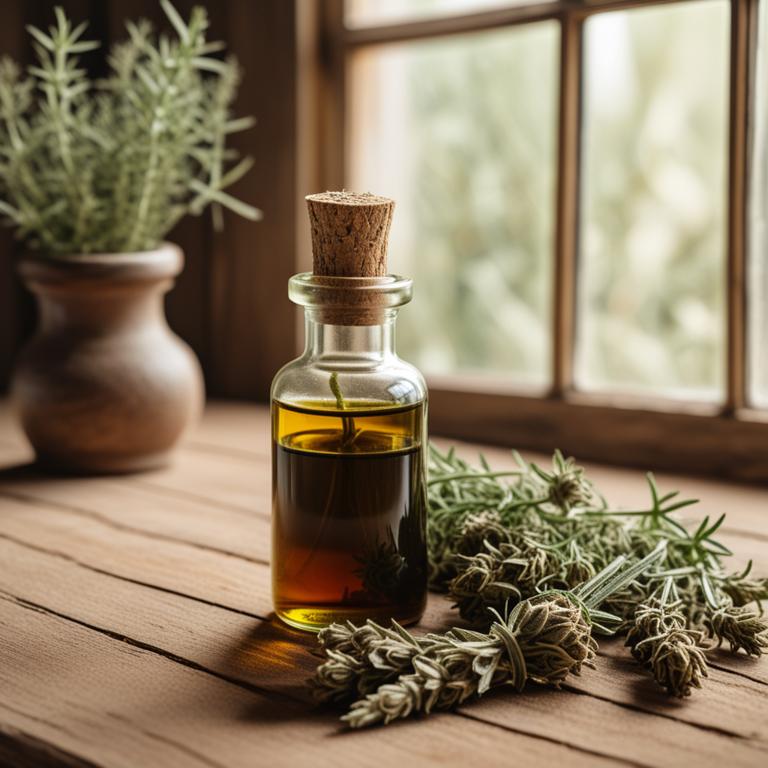
Rosmarinus officinalis tinctures have been traditionally used to treat brain fog, a condition characterized by mental confusion, forgetfulness, and lack of focus, due to their ability to improve cognitive function and promote mental clarity.
The bioactive constituents of Rosmarinus officinalis, including carnosic acid, rosmarinic acid, and camphor, play a crucial role in its efficacy, as they possess potent antioxidant, anti-inflammatory, and neuroprotective properties.
By stimulating blood flow to the brain, reducing oxidative stress, and inhibiting the formation of beta-amyloid plaques associated with neurodegenerative diseases, Rosmarinus officinalis tinctures help to alleviate brain fog symptoms and improve overall mental well-being.
The benefits of using Rosmarinus officinalis tinctures to treat brain fog include enhanced memory, improved concentration, and increased mental alertness, making it a popular herbal remedy for individuals seeking natural solutions to cognitive decline.
7. Salvia miltiorrhiza tinctures
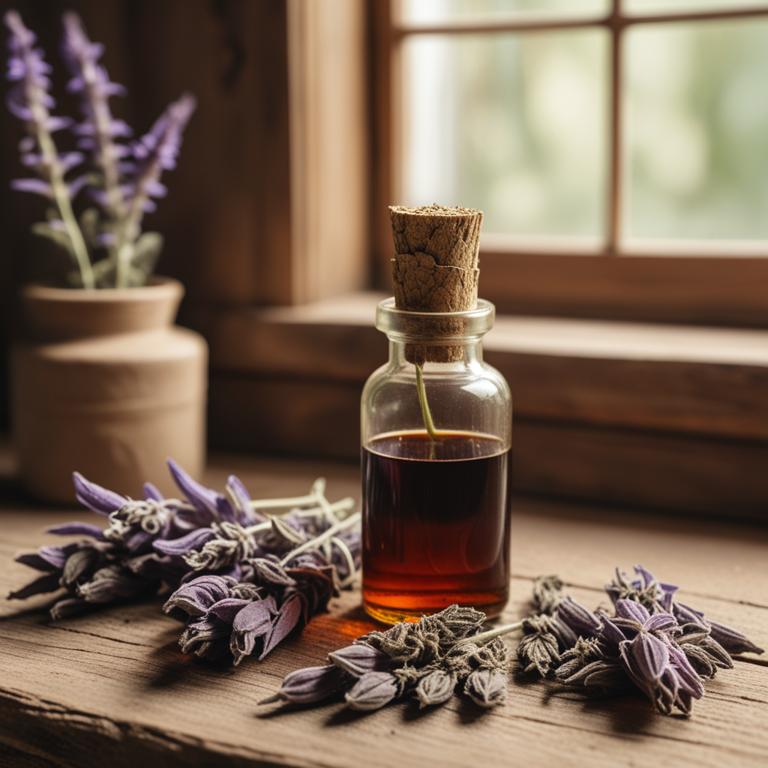
Salvia miltiorrhiza tinctures have been traditionally used to treat brain fog by enhancing cognitive function and improving blood circulation to the brain.
This herbal preparation contains bioactive constituents such as salvianolic acid and tanshinones, which have antioxidant and anti-inflammatory properties that help to reduce inflammation and oxidative stress in the brain.
By improving blood flow and reducing inflammation, Salvia miltiorrhiza tinctures help to alleviate brain fog symptoms, including memory loss, confusion, and mental fatigue.
The benefits of using Salvia miltiorrhiza tinctures to treat brain fog include improved cognitive function, enhanced mental clarity, and increased overall well-being.
Related Study
According to "Advances in experimental medicine and biology", Salvia miltiorrhiza tinctures may have potential benefits for brain fog due to its anti-amyloidogenic activity, which could help modulate the aggregation process of beta-amyloid (Aβ) and provide measurable cognitive benefits.
8. Avena sativa tinctures
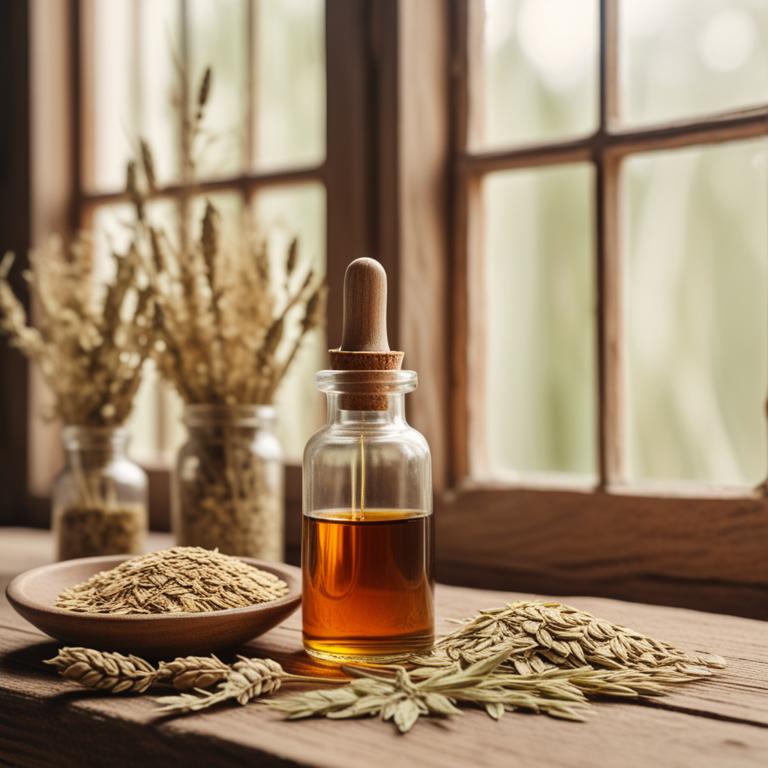
Avena sativa tinctures are a natural herbal preparation derived from the oat plant, traditionally used to treat brain fog and related cognitive impairments.
The properties of Avena sativa tinctures help to alleviate brain fog by promoting relaxation, reducing inflammation, and enhancing cognitive function.
The bioactive constituents, including avenanthramides and avenacosides, have been shown to have antioxidant and anti-inflammatory properties, which contribute to their therapeutic effects.
The benefits of using Avena sativa tinctures to treat brain fog include improved mental clarity, enhanced focus, and reduced stress levels, making it a popular natural remedy for individuals seeking a holistic approach to managing cognitive health.
9. Ocimum sanctum tinctures
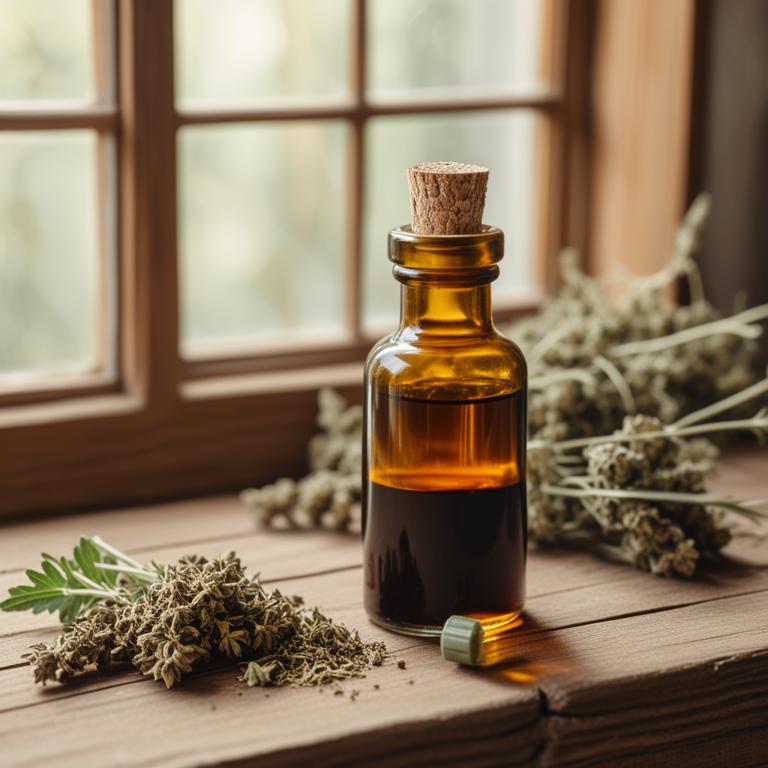
Ocimum sanctum tinctures have been traditionally used to treat brain fog, a condition characterized by mental fogginess and lack of focus.
The properties of this herbal preparation, such as its adaptogenic and antioxidant properties, help to reduce stress and inflammation in the brain, which contribute to the development of brain fog.
The bioactive constituents of Ocimum sanctum tinctures, including ursolic acid, oleanolic acid, and rosmarinic acid, have been shown to possess neuroprotective and anti-inflammatory properties, which help to improve cognitive function and reduce brain fog.
By reducing oxidative stress and inflammation, and improving cognitive function, Ocimum sanctum tinctures can help to alleviate symptoms of brain fog and improve overall mental clarity and focus.
Related Study
According to "Indian journal of experimental biology", Ocimum sanctum tinctures for brain fog may be beneficial in ameliorating the amnesic effects of scopolamine and diazepam, as well as aging-induced memory deficits in mice.